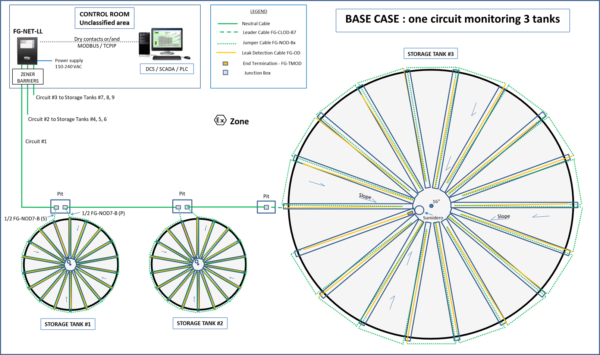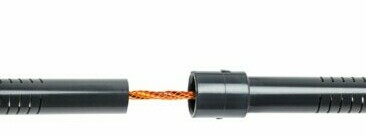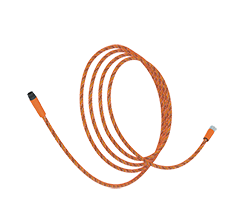Étude de cas du projet TTK : TTK à l’aéroport de Mexico City
TTK FUEL LEAK DETECTION SYSTEM IN MEXICO CITY AIRPORT

To read this case study in printable PDF format.
Project Background
The construction of nine storage tanks – each having a diameter of about 30 meters – will take place in two phases at the new Terminal 4 of Mexico City airport.
Phase 1 will cover the first three tanks (already built in 2021), and the remaining 6 tanks for phase 2 will be achieved between 2023 and 2030.
To fit the security requirements and the environmental laws in place in Mexico, a reliable, robust and advanced hydrocarbon leak detection system is required.
TTK's Solution
For this project, TTK has designed and recommended a next-generation hydrocarbon leak detection system, consisting of proven reliable oil sensing cables and an advanced digital monitoring unit.
For each tank, 18 hydrocarbon sensing cables are installed within the concrete foundation (see below scheme). This installation within the tank’s foundation allows an early leak detection of hydrocarbon. Prior to the installation, sensing cables are inserted in PE slotted pipes (see figure 1), their extractability allows easy maintenance and replacement in the event of leak.
In total, 58 sensing cables for the 3 tanks are connected to a central digital monitoring panel (product reference FG-NET-LL) in a nearby building (unclassified area).

TTK hydrocarbon leak detection system for Mexico City airport storage tanks scheme

Figure 1: TTK hydrocarbon sensing cables inside a slotted pipe
Digital hydrocarbon monitoring panel FG-NET-LL
When a leak is detected on a sensing cable, the central panel triggers an audible alarm, activates relays, displays the precise location (tank name/number and cable name/number) of the leak on its integrated dynamic map and instantly reports to client’s SCADA System via its JBUS/MODBUS protocol, it also sends email alerts and SNMP traps to a LAN-connected SCADA System.
Multiple simultaneous leaks can be detected (58 lengths of cables installed = 58 potential alarms).
When a cable break occurs, the system maintains its integrity by continuing to monitor all preceding cables for faults.
Furthermore, another advantage of this monitoring panel is its high capacity. One single unit can monitor a nominal capacity of 120 lengths of hydrocarbon sensing cables. The future extension of the system with the addition sensing cables for the 6 remaining tanks, can be added to the existing monitoring system, with no need for any extra monitoring panel, simply the addition of jumper cables and diversion box to complete the connections.

Figure 2: FG-NET-LL: digital hydrocarbon leak monitoring panel
Addressable hydrocarbon sensing cable FG-OD
The FG-OD cables detect the presence of liquid hydrocarbon at any point along their length and the embedded microprocessor in each one allows for multiple leak detection and location in the same circuit.
Jet fuel is a partially volatile hydrocarbon liquid and the FGOD cable can detect it between 10 to 20 minutes* (much faster than the 50 minutes of conventional sensing cables).
*: depending on exact liquid composition and leak conditions

Figure 3: Addressable fuel sensing cable: FG-OD
